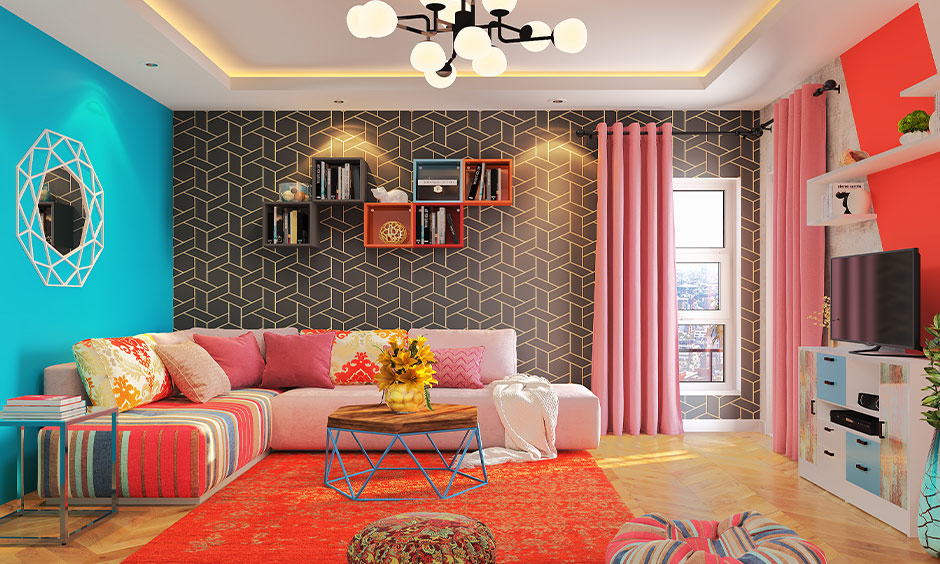The Power Of Color In Interior Design
Colors wield an influential role in interior design, molding the ambiance and feel of a space. From calming blues to vibrant reds, the right choice of colors can transform an ordinary room into an extraordinary experience. Whether aiming to create a serene retreat in your bedroom or a lively, welcoming atmosphere in your living room, selecting hues that align with your desired mood and functionality is vital. For an expert approach to interior painting, exploring services like these can offer valuable guidance; click here to learn more about transforming your space through color.
Understanding The Psychology Of Colors
Colors affect our emotions and behavior in unique ways, often subconsciously. For instance, research shows that colors like blue and green commonly induce calm, making them ideal for places like restrooms and bedrooms where rest is crucial. Conversely, the warm tones of red and yellow emit energy and excitement, which can invigorate social areas such as kitchens and dining rooms. Understanding these psychological impacts allows homeowners to select colors that enhance a room’s atmosphere and cater to its intended function.
Exploring Current Color Trends
Color trends in the ever-changing field of interior design change with the seasons and fashions, reflecting both technological breakthroughs and cultural influences. Following these trends is essential to keeping your home décor looking new and fresh. For example, soft pastels and nature-inspired colors have gained popularity as people seek solace through home design. Sources like Homes & Gardens provide valuable insights into the latest color movements and how they can be skillfully incorporated into your decor. This ensures that your home reflects contemporary styles while still being timeless.
Practical Tips For Color Coordination
Using a Color Wheel
The color wheel is a necessary tool for both designers and homeowners. It helps visualize relationships between colors, allowing you to create schemes that achieve balance and harmony. By understanding complementary (opposite) colors, analogous (neighboring) shades, and triadic combinations (equidistant from each other on the wheel), you can confidently design rooms that evoke the desired emotional response.
Building with Neutral Tones
Neutral hues like grays, whites, and beiges give a soothing and flexible canvas that may be used in any space. These shades can easily be refreshed with pops of color from accessories like cushions, rugs, and artwork, thus allowing your home to evolve with changing seasons and trends. Neutrals also provide a seamless backdrop that enables other design elements to stand out, maintaining balance while incorporating individual styles.
Recognizing Undertones
Undertones can subtly shift a color’s perceived warmth or coolness, dramatically impacting your design’s cohesion. A keen understanding of these nuances will help you choose paints that complement existing features in your home, such as flooring, cabinetry, and furniture, enhancing the overall symmetry and flow of your interiors. Knowing whether to lean towards warm or cool undertones ensures that each room shines independently while still contributing to the harmony of the whole house.
Creating Harmonious Color Schemes
Crafting harmonious color schemes involves more than selecting beautiful shades—it requires considering how colors flow from one room to another. A consistent palette throughout your home ensures visual harmony and an overarching sense of cohesion. This doesn’t mean every room must look the same; subtle transitions can allow for variation while maintaining continuity, creating an aesthetically pleasing experience as you move through different spaces.
Real-Life Examples Of Effective Color Use
Examples from real homes can spark creative ideas for transforming your space. For instance, lighter shades such as off-whites can make rooms feel more extensive and airy by reflecting natural light. In contrast, employing darker hues like a deep emerald or rich navy can add depth and sophistication, making larger rooms feel cozy and intimate. Seeing how others creatively use color to redefine their spaces can inspire you to experiment with bolder choices.
Seeking Professional Guidance
While many opt for self-directed color projects, seeking professional advice can provide a personalized touch that maximizes your space’s potential. Professionals consider natural light, room function, and personal preferences, offering palettes that resonate uniquely with your lifestyle and home—working with a professional guarantee that your design reflects individuality and inventiveness while satisfying functional requirements.
Conclusion: Transform Your Home With Color
By thoughtfully selecting and coordinating interior colors, you can redefine your living spaces, making them genuinely reflective of your personality and lifestyle. As you dive into the techniques and resources available, ensure that your home shines with an inviting aesthetic that is both refreshing and uniquely yours. Whether you want to rejuvenate your space entirely or make minor, impactful updates, the transformative power of color awaits you to breathe new life into your interiors.
Keep an eye for more latest news & updates on My Stories List!
